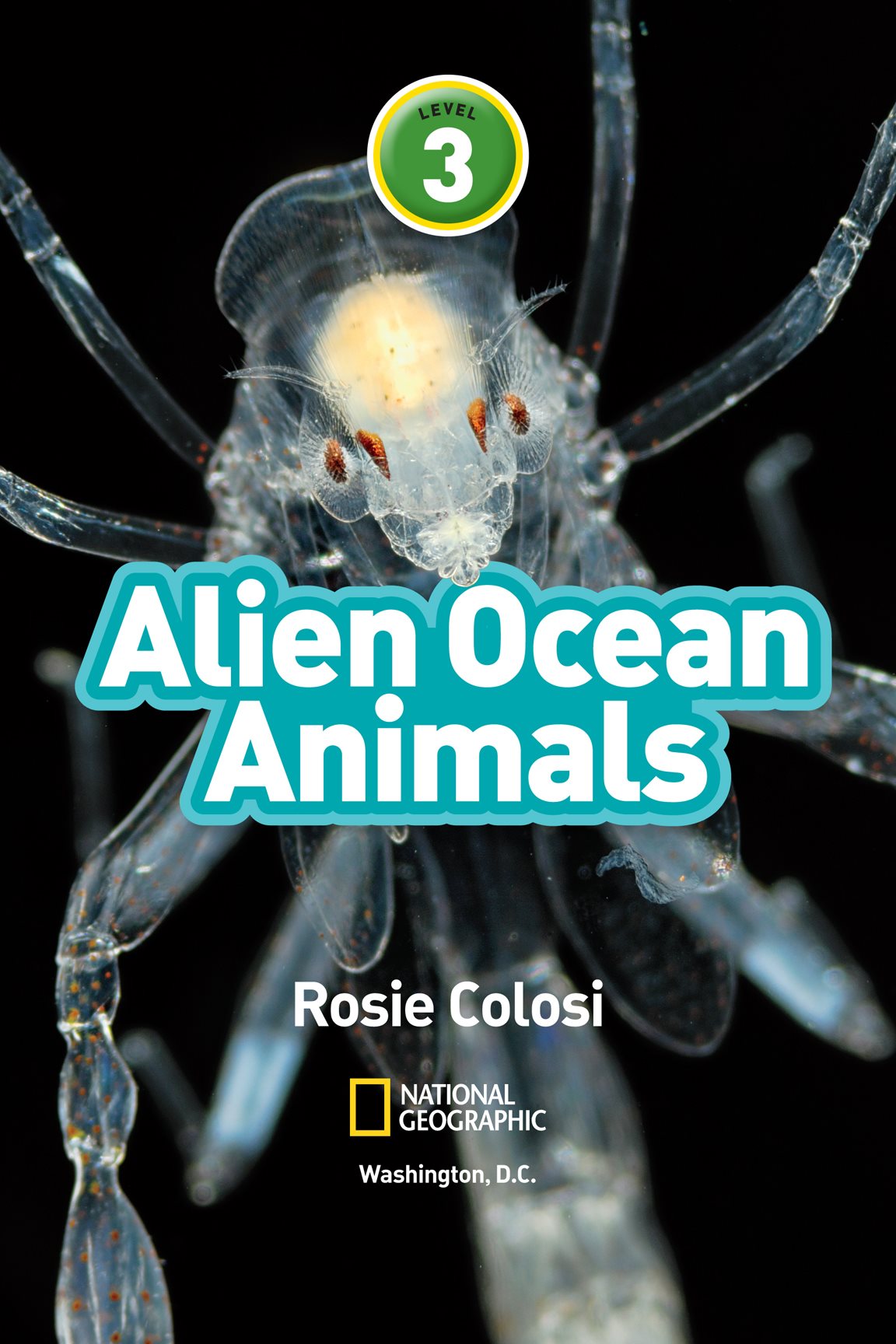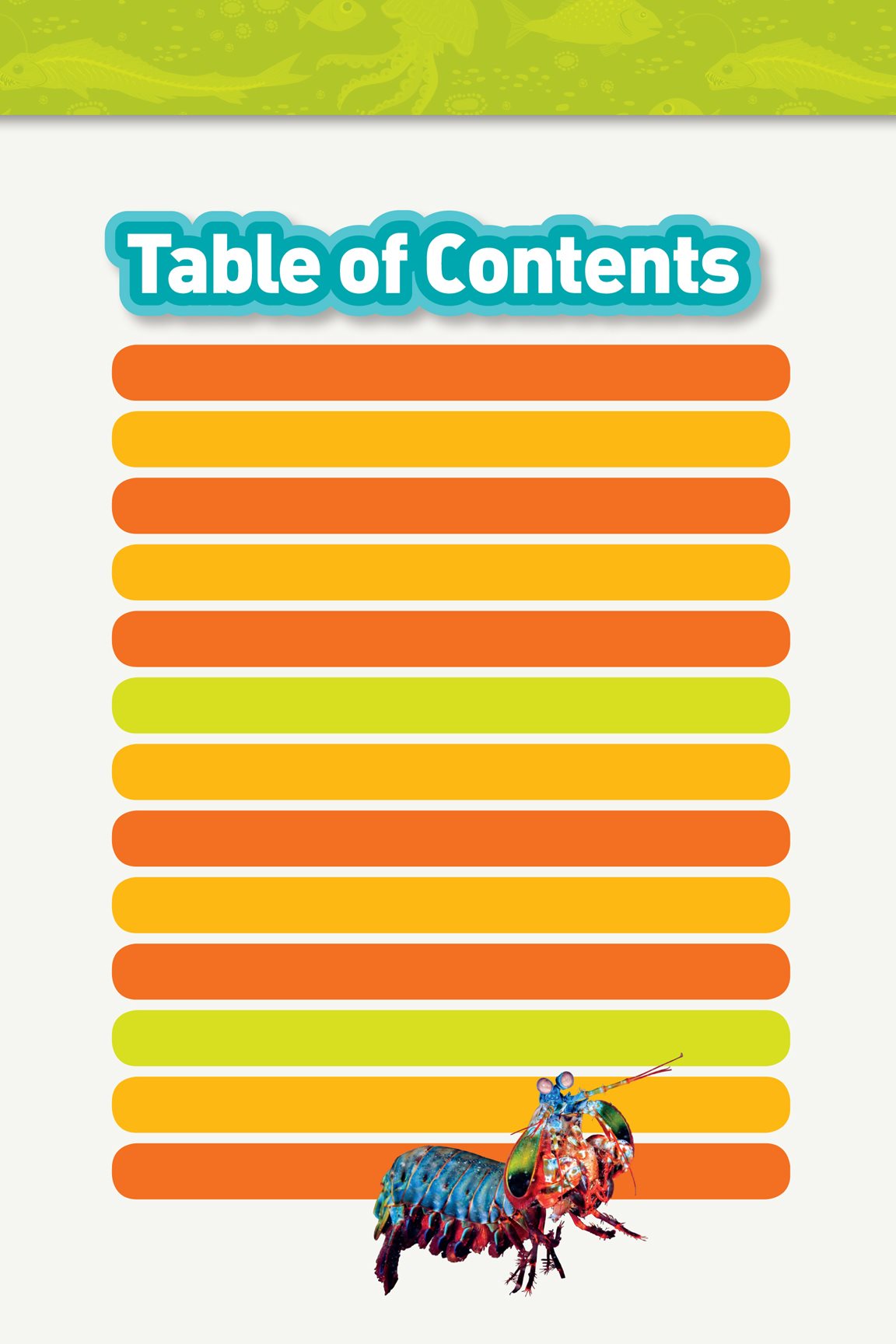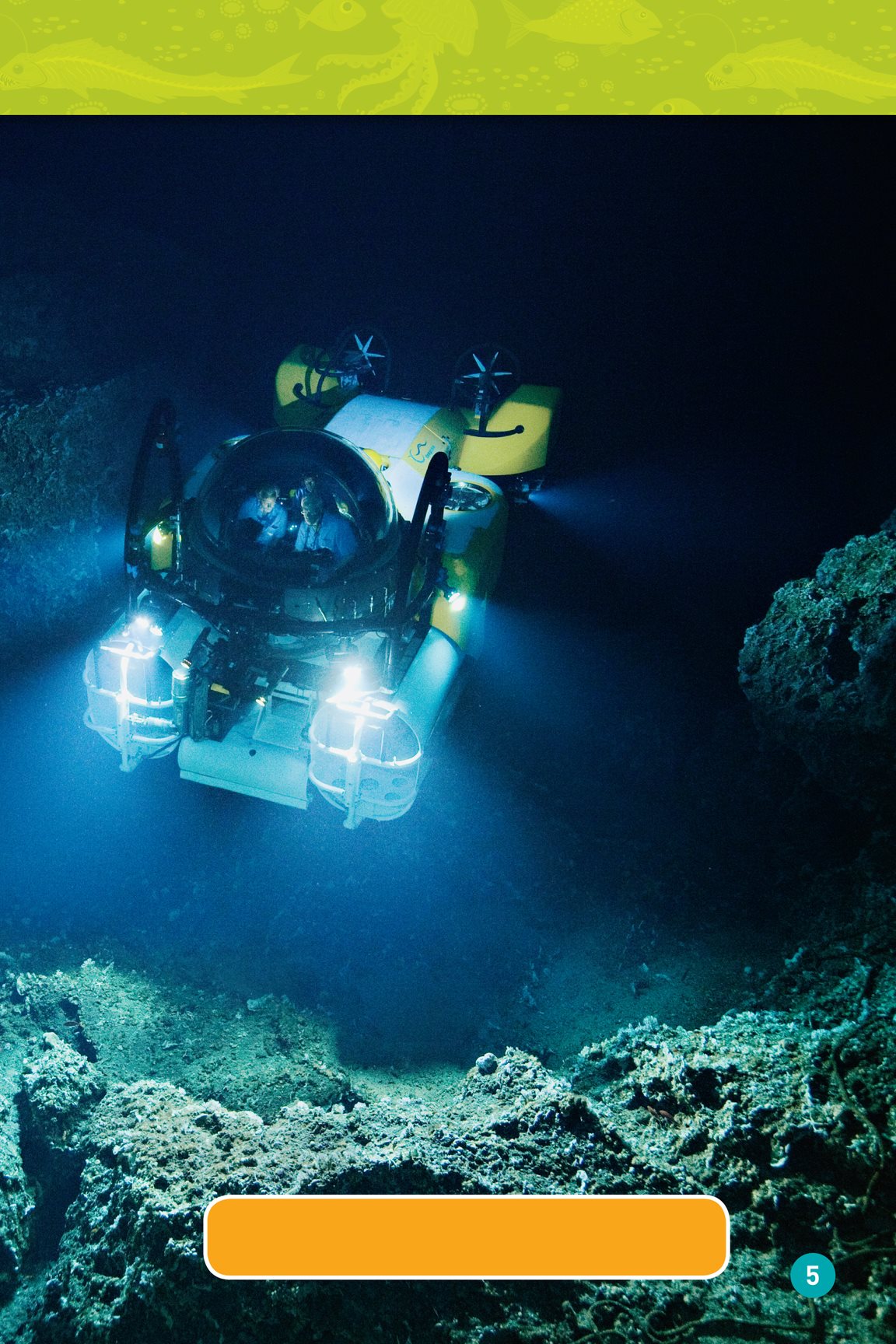
Children are naturally curious about the world around them, and
curiosity is a powerful motivation for reading. Studies show that
informational reading is critical to success in school. National
Geographic Kids Readers allow you to feed your childrens interests
and create readers who not only can read, but also want to read!
To sustain childrens excitement about reading, we have created a
special program called NATIONAL GEOGRAPHIC KIDS SUPER READERS.
As kids read each National Geographic Kids Reader, they cross
off its picture on a free National Geographic Kids Super Readers
poster that parents can download from natgeokids.com/superreaders.
Throughout the process, kids and parents go to the website and
download specially designated prizes that reward their effort. Kids
can have even more reading fun online, with lively book-related
activities, quizzes and games, fascinating excerpts, and sneak
previews of upcoming books.
The National Geographic Kids Super Readers program appeals to
kids love of accomplishment while providing them with incentives
to keep reading. When the reading experience is fun, children learn
more and achieve more. What could be better than that?
Sincerely,
Mariam Jean Dreher
Professor of Reading Education
University of Maryland, College Park

For Brett, who helped me dive in; for Ruby
and Jane, who keep me afloat; and for Ryan,
my constant lifeguard.R.C.
Copyright 2020 National Geographic Partners, LLC
Published by National Geographic Partners, LLC.
Washington, D.C., 20036. All rights reserved.
Reproduction of the whole or any part of the contents
without written permission from the publisher
is prohibited.
NATIONAL GEOGRAPHIC and Yellow Border Design
are trademarks of the National Geographic Society,
used under license.
Designed by YAY! Design
The author and publisher gratefully acknowledge
the expert content review of this book by Maryke
Musson, Curator, Two Oceans Aquarium, Cape Town,
South Africa, and the literacy review of this book by
Mariam Jean Dreher, professor of reading education,
University of Maryland, College Park.
Authors Note
The cover shows a telescope fish, the title page
features a close-up view of a pram bug, and the
Table of Contents page shows a mantis shrimp.
Photo Credits
ASP=Alamy Stock Photo; GI=Getty Images;
MP=Minden Pictures; NG=National Geographic Image
Collection; NPL=Nature Picture Library; SCS=Science
Source; SP=SeaPics.com; SS=Shutterstock
Cover, Dant Fenolio/SCS; 1, Solvin Zankl/NPL; 3,
Whitcomberd/Dreamstime; 4-5, Brian J. Skerry/NG;
6, Antonio Caparo; 8-9, Paulo Oliveira/ASP; 9, Norbert
Wu/MP; 10, E. Widder/HBOI/GI; 11, Solvin Zankl/NPL;
12, Jordi Chias/NPL; 13 (UP), Courtesy of NOAA/Edith
A. Widder, Operation Deep Scope 2005 Exploration; 13
(LO), Courtesy of NOAA Bioluminescence and Vision
on the Deep Seafloor 2015; 14, Solvin Zankl/NPL; 15,
WaterFrame/ASP; 16-17, Kelvin Aitken/V&W/Image
Quest Marine; 18, WaterFrame/ASP; 19-21 (ALL),
David Wrobel/SP; 22, Courtesy of NOAA Office of
Ocean Exploration and Research, Gulf of Mexico 2017;
23, Courtesy of NOAA Okeanos Explorer Program;
24, D. R. Schrichte/SP; 25, Bournemouth News/SS;
26 (UP), Perry Thorsvik/NG; 26 (CTR), Courtesy of
Officers and Crew of NOAA Ship PISCES/Collection
of Commander Jeremy Adams, NOAA Corps; 26 (LO),
Humberto Ramirez/GI; 27 (UP), Courtesy of the Five
Deeps Expedition; 27 (CTR), Jaffe Lab for Underwater
Imaging/Scripps Oceanography/UC San Diego; 27
(LO), Luis Lamar/NG; 28, Kei Nomiyama/REX SS; 29,
Solvin Zankl/NPL; 30, Dant Fenolio/GI; 31, Solvin
Zankl/NPL; 32-33, randi_ang/SS; 34, Dant Fenolio/
SCS; 35, Steve Downer/SCS; 35 (INSET), Flip Nicklin/
MP; 36-37, Noriaki Yamamoto/MP; 38, William
Chadwick, NOAA Vents Program; 39-40 (ALL), David
Shale/NPL; 41, Courtesy of NOAA Okeanos Explorer
Program, Galapagos Rift Expedition 2011; 42, Seatops/
imageBROKER/SS; 43, Wild Horizons/UIG via GI;
44 (UP), Courtesy of Submarine Ring of Fire 2006
Exploration, NOAA Vents Program; 44 (CTR), Brian
J. Skerry/NG; 44 (LO UP), Courtesy of NOAA Office of
Ocean Exploration and Research, Gulf of Mexico 2017;
44 (LO LE), Solvin Zankl/NPL; 44 (LO RT), Courtesy
of NOAA Office of Ocean Exploration and Research,
2016 Deepwater Exploration of the Marianas; 44 (LO
LO), Dant Fenolio/SCS; 45 (UP LE), David Shale/NPL;
45 (UP RT), Gregory Ochocki/SP; 45 (LO LE), Emory
Kristof/NG; 45 (LO RT), katatonia82/SS; 46 (UP), Solvin
Zankl/NPL; 46 (CTR LE), randi_ang/SS; 46 (CTR RT),
Antonio Caparo; 46 (LO LE), E. Widder/HBOI/GI; 46
(LO RT), Leremy/SS; 47 (UP LE), Sebastian Kaulitzki/
SS; 47 (UP RT), Kei Nomiyama/REX SS; 47 (CTR LE),
William Chadwick, NOAA Vents Program; 47 (CTR RT),
Flip Nicklin/MP; 47 (LO LE), Norbert Wu/MP; 47 (LO
RT), Dant Fenolio/GI; top border (THROUGHOUT),
Elena Eskevich/SS; vocabulary box (THROUGHOUT),
Maquiladora/SS
Library of Congress Cataloging-in-Publication Data
Names: Colosi, Rosie, author. | National Geographic
Society (U.S.)
Title: Alien ocean animals / by Rosie Colosi.
Description: Washington, DC : National Geographic
Kids, [2020] | Series: National Geographic readers |
Audience: Age 4-6. | Audience: K to Grade 3.
| Identifiers: LCCN 2019007817 (print) | LCCN
2019008448 (ebook) | ISBN 9781426337086
(e-book) | ISBN 9781426337055 (paperback) |
ISBN 9781426337062 (hardcover)
Subjects: LCSH: Marine animals--Juvenile literature.
| Deep-sea animals--Juvenile literature.
Classification: LCC QL122.2 (ebook) | LCC QL122.2
.C6526 2020 (print) | DDC 591.77--dc23
LC record available at https://lccn.loc.gov/2019007817
National Geographic supports K12 educators with ELA Common Core Resources.
Visit natgeoed.org/commoncore for more information.








